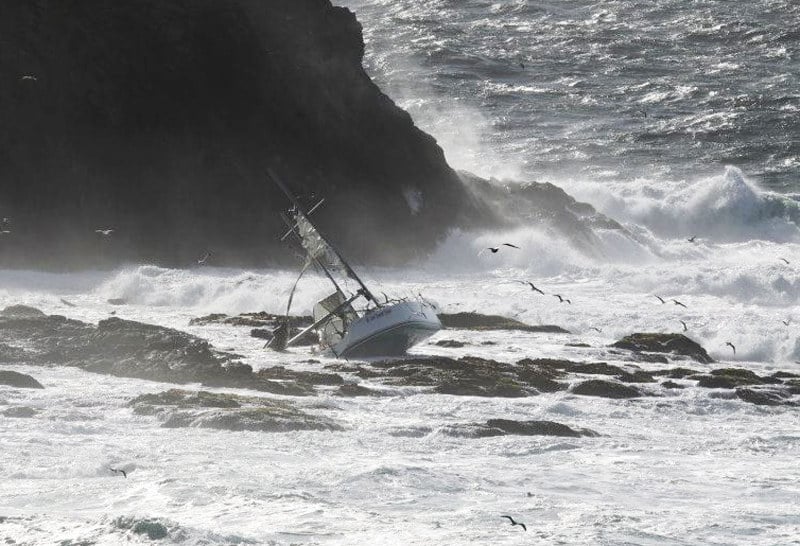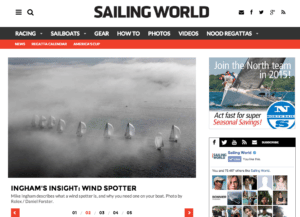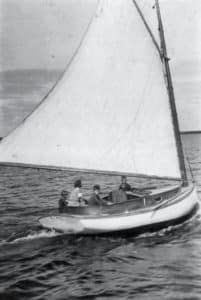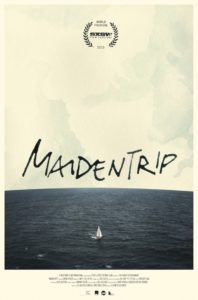
Farallones Tragedy
In the aftermath of the Full Crew Farallones Race tragedy, Bryan Chong, one of the three survivors from Low Speed Chase, shares a moving account of the race, the tragedy, why we sail, and how we can avoid such terrible events in the future. Here is an excerpt of his story, which you can read in its entirety on Latitude 38:
_Around the Island
The Farallon Islands have a rugged, haunting beauty about them but there’s no time for sightseeing as we approach. The waves and wind have steadily built and we start seeing scattered white caps. As the conditions intensify, I’m on the main and Alan – by far the best driver with the most ocean experience – is on the wheel.
We soon approach the first rocky point on the northeast corner of the island. The swells are much larger and the wind has been building. We saw another boat pass a few minutes earlier on an outside line. Behind us, one boat is outside of us and another appears to be on our same line.
There’s a YouTube video titled “Crewed Farallones April 14, 2012” showing the Santa Cruz 50, Deception, and several other boats rounding the island. They would have rounded about an hour before us in similar, if not slightly lighter, conditions. The video shows the difference in swell sizes before, during and after rounding the island. Michael Moradzadeh, who thankfully radioed in the initial distress call, notes that the video doesn’t do justice to the intensity of the day. I agree, but it does provide a good baseline for those who didn’t make the race. As I watch the video, Deception’s route feels eerily similar to our own. In fact, when we passed the first point I think we were just slightly outside of their line.
The South Farallones consist of two primary islands, which together form a crescent with its arms toward the north. Between the two northern points we begin to crack off the sails into a close reach as we head toward the next point. The boat in the “Crewed Farallones” video had about the same amount of sail trim but it appears they turned after we did. Our route takes us inside the line of Deception and closer to the island.
Fellow sailors can relate to trimming sails during intense racing or weather conditions. We assimilate data in a series of snapshots taken from within the boat and across the race course. I suspect that’s the reason sailors show up to race protest rooms with 5 different accounts of an incident that happened at a speed no faster than a run.
I’ve been asked by investigators, friends and family just how close we were to the rocky coastline. Truthfully, this is one of the most difficult questions to answer; my focus was almost purely on the distance to the beginning of the break zone. Staying away from the rocks was a secondary concern to staying away from the breakers – an ocean feature that has scared me since long before this weekend. Swells are fine. Breakers aren’t.
As we approach the second point I estimate we’re inside of 10 boat lengths – which is 128 yards on a Sydney 38 – from the beginning of the break zone. Our distance looks safe and no one on the boat comments. I catch a glance of clear swells off the port side of the boat between the break zone and us. We keep sailing. The boat is heeled toward the island. Alan is driving, I’m trimming main, and everyone else is on the rail.
Then, we come across the largest swell we’ve seen all day. It begins to crest but we pass over it before it breaks. Thirty seconds later, we will not have such luck.
The Wave
I see another wave approaching in the distance. It’s coming from the same direction as the other swells but it’s massive. I’ve seen large waves before but this is unlike anything I’ve ever seen outside of big-wave surf videos.
As the wave approaches it begins to face up, its front flattening as it crests. By the time our boat meets it, there’s no escape route. Alan steers the boat into the wave and the bow of Low Speed Chase ascends the breaking wave, which seconds sooner would have been a giant swell and seconds later would have already broken. Instead, we’re heading into a crashing wall of water with 9-10 knots of boat-speed and it breaks directly on us. I lock my right arm to the bottom lifeline and brace for the impact. The last thing I see is the boat tipping toward vertical with a band of water still above it. A single thought races through my head: “This is going to be bad.”
_









